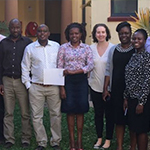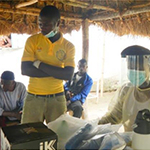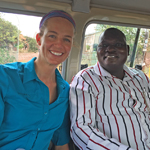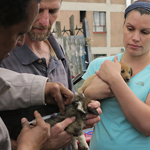Global Stories
CDC Responds to a Dangerous Fungus Here and Abroad

Disease knows no borders, as demonstrated by the emergence and movement of C. auris around the world. The challenge of an emerging threat like C. auris requires an urgent and comprehensive response at all levels – local, state, federal, and international. To date, it has been detected in more than 20 countries, including the United States. Using whole genome sequencing, CDC scientists identified four different groups of C. auris that have emerged since 2009 in different parts of the world. In response, CDC is working with other countries to improve detection and implement aggressive control measures.
Read more about CDC Responds to a Dangerous Fungus Here and Abroad
Antibiotic Resistance in India

In India, bacteria that cause common infections, such as urinary tract and bloodstream infections, are becoming resistant to nearly all antibiotics. This resistance is due to a combination of factors: uncontrolled access to antibiotics, gaps in infection prevention and control (IPC) practices, and high rates of communicable diseases. Antibiotic resistance, or AR, is a serious problem throughout the country, and threatens to reduce the usefulness of antibiotics both in India and around the world.
NCEZID Applied Epidemiology Training Helps Cholera Outbreak Response in Kenya

Sometimes, the work of a global disease detective starts just hours after a training session ends. That was the case for a group of Kenyan Field Epidemiology and Laboratory Training Program (FELTP) residents in May 2017, when a Nairobi hospital reported an outbreak of suspected cholera among patients. Four of the patients had attended a wedding in Nairobi.
Read more about Epidemiology Training Helps Cholera Response in Kenya
Ebola Response in Sierra Leone

Sierra Leone was one of the three countries hardest hit by the 2014 Ebola outbreak. The severity of the outbreak highlighted the need for immediate international response to save lives and stop the spread to the United States and other countries. To assist with the crisis in Sierra Leone, CDC deployed a team from its International Infection Control Program out of the National Center for Emerging and Zoonotic Infectious Diseases Center’s Division of Healthcare Quality Promotion.
Healthcare-Associated Infections in the Country of Georgia

In the mountainous country of Georgia, the healthcare system is dominated by private corporations, which manage approximately 90% of the hospital beds. Rarely are healthcare personnel trained in infection prevention and control (IPC) practices such as hand hygiene and injection safety. Gaps in IPC practices can lead to widespread, healthcare-associated infections (HAIs) and outbreaks that could spread infectious diseases throughout Georgia and across borders, threatening global public health.
Vector-borne Disease Surveillance and Research in Uganda Expands Laboratory Capacity

Uganda is a focal point for emerging and re-emerging infectious diseases. Many mosquito-borne viruses, known as arboviruses, were discovered in Uganda and continue to circulate. Outbreaks of viral hemorrhagic fevers, including Ebola, Marburg, and yellow fever occur periodically, and plague remains endemic in the highlands of the West Nile region.
Child Health and Mortality Prevention Surveillance Network (CHAMPS) Program

Every year, six million children die before their 5th birthday. CDC and partners are working to answer the critical question of why. CDC’s Division of High-Consequence Pathogens and Pathology (DHCPP) out of the National Center for Emerging and Zoonotic Infectious Diseases (NCEZID) has teamed up with domestic and international partners to map the causes of child mortality in developing countries.
Global Rabies Work

An estimated 59,000 people die from rabies each year, nearly half of whom are children. Rabies claims the life of one person every 9 minutes, putting it among the deadliest of all global zoonotic diseases, or diseases that are transmitted between animals and people. In response to Haiti’s rabies epidemic, CDC’s Poxvirus and Rabies Branch (PRB) began a series of interventions to address rabies prevention and containment in Haiti.
Prioritizing Zoonotic Diseases in Ethiopia

Collaboration is the key to success when tackling any complex issue. CDC’s Division of High-Consequence Pathogens and Pathology (DHCPP) discovered just how critical collaboration can be when they launched a project in Ethiopia to tackle some of the country’s dangerous yet neglected zoonotic pathogens.
Ebola Reservoir Study

The 2014 Ebola epidemic was the largest in history, with widespread transmission in multiple West African countries. The first case was reported in Guinea in March 2014, and the disease quickly spread into the neighboring countries of Liberia and Sierra Leone. If the virus reservoir is determined, CDC and other international health partners will be able to issue stronger guidance to local groups about the origins of Ebola virus transmission, making such a widespread outbreak less likely to occur in the future.
- Page last reviewed: September 27, 2018
- Page last updated: September 27, 2018
- Content source:
Centers for Disease Control and Prevention
National Center for Emerging and Zoonotic Infectious Diseases (NCEZID)


 ShareCompartir
ShareCompartir